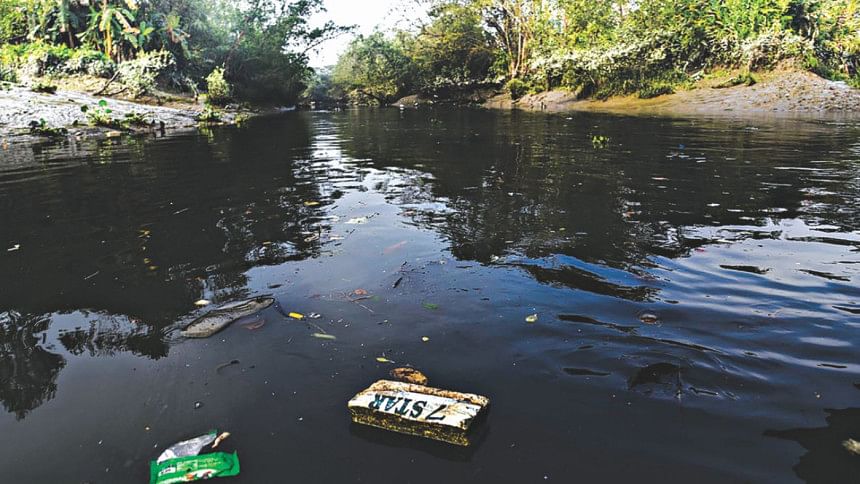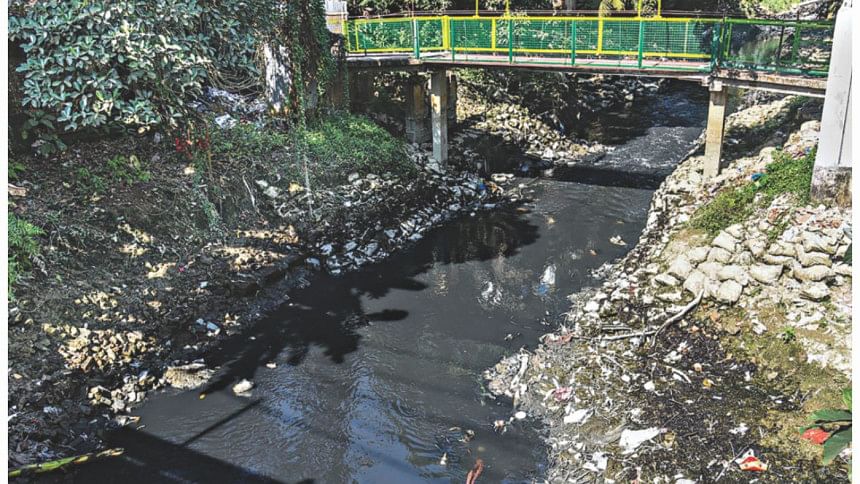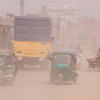Factory waste pollutes Halda

The Halda River, which meanders through south east Bangladesh, is famous for being perhaps the only place in Southeast Asia where the pure Indian carp naturally occurs.
But the waterway is now in dire straits as the Department of Environment (DoE) is yet to implement a year and half old order of the Prime Minister's Office to shut down the factories releasing pollutants into the streams.
The industrial belt in Bayazid, which is a 5 kilometre stretch of land starting at Kulgaon and ending at Oxygen, reflects a feverish development as the canals around it carry the industrial waste generated to Halda, wreaking havoc on its biotic community.
The waterway's reputation reached its nadir seven years ago with the start of the Ananya Residential Area Project. In hopes of redirecting industrial waste away from the residential area, the Chittagong Development Authority (CDA) built a master drain connecting Bamun Shahi Khal to Kuyaish Khal.
Kuyaish Khal is connected to the other canals -- Khondokia Khal, Madarsha Khal, Madari Khal, Bathua Khal, Krisnokhali Khal, Bamun Shahi Khal and Hamidia Khal -- of Hathhazari upazila that all flow out into the Halda.
Previously, the waste from Bayazid reached the Karnaphuli River directly via Bamun Shahi Khal. Although industrial pollutants negatively impacted the biotic life of Karnaphuli River as well, the quality of water was better as it is a fast flowing river.
The DoE prepared a list of factories in Bayazid after the PMO asked them to conduct an investigation. According to the investigation report from February 16 last year, all the factories operating there had installed effluent treatment plants (ETP).
However, the investigation was termed 'insufficient' by the PMO which again asked the directorate general of DoE to take necessary action to shut down the factories in a letter issued on April 2017.
Some of the factories that operate there include ones of tanneries; paper mills; knit, dyeing and washing; and condensed milk and beverages.
The Halda River Research Labratory conducted tests at five points of the river to measure the level of dissolved oxygen in the water in December of last year, said Manzurool Kibria, its director.
There was less than one mg per litre of dissolved oxygen at the mouth of Khondokia Khal that runs from Bayazid; the minimum level for optimal aquatic life is 5 mg/litre, according to international standards.
At the four other points, there was less than 3 mg/litre of dissolved oxygen, said Kibria, who is also a professor of Zoology at Chittagong University.

Dissolved oxygen is necessary to many forms of life including fish, invertebrates, bacteria and plants; when it drops below 5 mg/l, aquatic life is put under stress. Oxygen levels that remain below 1-2 mg/l for a few hours can result in the death of large fish, experts said.
The study of dissolved oxygen, plankton and benthos reveals that Halda is not in good health, Kibria told The Daily Star. “The river cannot keep up with the pollution.”
On the main cause of deteriorating river health, Acting Director of Chittagong DoE Altaf Hossen Chowdhury blamed the master drain that flows into the Halda River.
“We repeatedly asked CDA to fill up the drain so that effluents flow to Karnaphuli through Bamun Shahi Khal. But our requests have fallen on deaf ears.”
The DoE regularly monitors the factories at Bayazid to check whether the ETP facilities are actually running or not. “Whenever we visit, the ETP are running. But as the study reveals a different scenario, we are gearing efforts to ensure that the ETPs run efficiently.”
On the PMO's order, he said, “We do not have sufficient manpower to execute the order. Furthermore, shutting these large factories will have a negative impact on the local economy.”
Roichul Alam Mondol, director general of DoE, said they are trying to ensure compliance instead of shutting the factories.
“We have made every factory there install ETPs. There must be combined efforts from all ministries involved to protect this unique water body,” he said.
Due to the biochemical properties of its water, carps choose it as a safe haven to release spawns in Halda, said experts. But manmade hazards now threaten the natural habitat of these fish, they added.

 For all latest news, follow The Daily Star's Google News channel.
For all latest news, follow The Daily Star's Google News channel. 








Comments